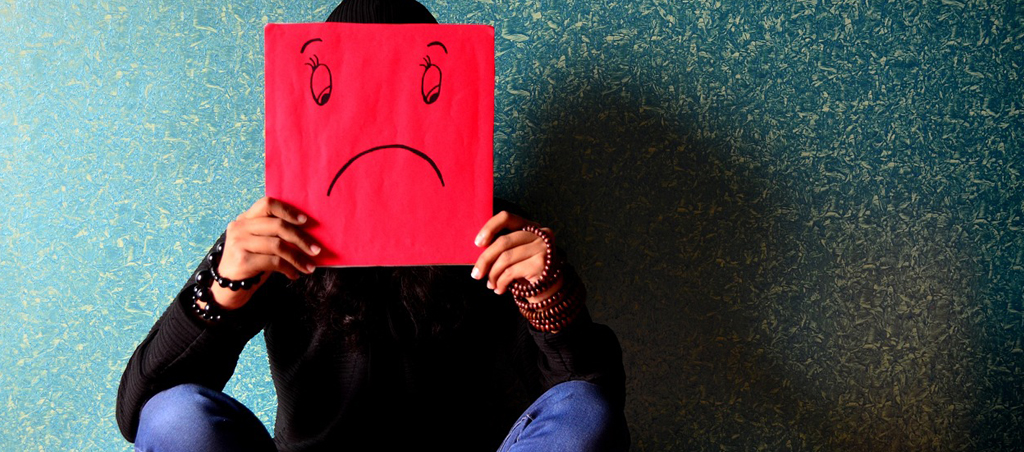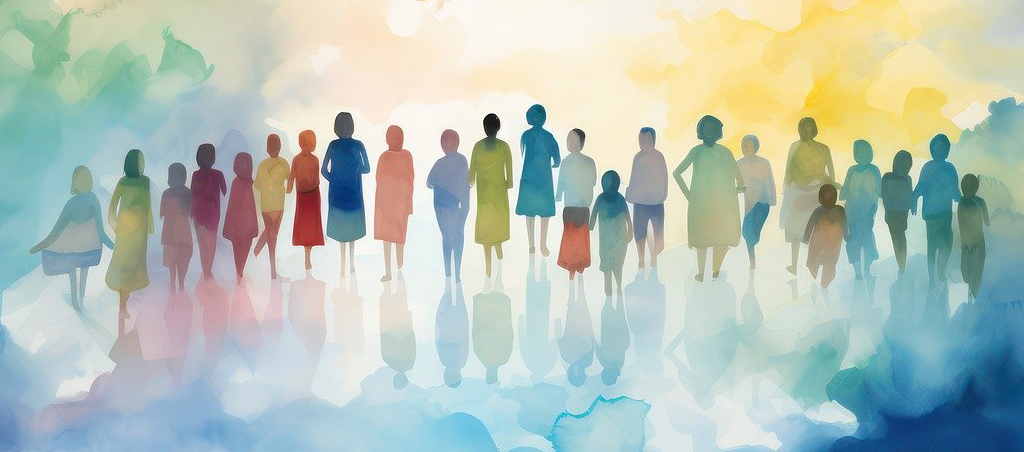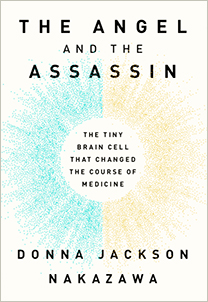Holiday Stress and the Myth of the Perfect Family Gathering

Are you feeling the pressure of the holiday season? You’re not alone. The holidays aren’t always as happy and perfect as movies and commercials make them seem. In my workshops across the country…
When Parents Are Overwhelmed, Teenagers Suffer

Our Unhealed Trauma and Anxiety Are Creating a Crisis for Our Teens. A groundbreaking CDC study recently asked teens to self-report the adversities they face and how those experiences affect them. The findings are sobering…
Diving Gently into Your Own Story

Begin to Uncover the Impact of Childhood Trauma with Writing-to-Heal Strategies. Have you ever wondered if experiences from your past might still be shaping how you feel and respond to life today? Unresolved childhood trauma can quietly linger, impacting both your…
Your Story Matters – To You, and to Your Children

How healing your own wounds can transform your children’s lives What if the one thing your kids are hoping and waiting for is for you to do the work to grow with them instead of staying stuck in old behaviors and reactions that never served you, and certainly don’t serve them? If this resonates…
Healing from Childhood Trauma + Building a New Community

Do you feel you have enough connection and community in your life? I’ve been missing it. My family and lifelong friends fulfill my longing for deep personal connection but sometimes – especially in an era of digital overwhelm, fraught interactions on social media, and…
The Angel and the Assassin: The Tiny Brain Cell that Changed the Course of Medicine
My new book, THE ANGEL AND THE ASSASSIN: THE TINY BRAIN CELL THAT CHANGED THE COURSE OF MEDICINE will be out in just 2 months, on January 21st, 2020! After two years of reporting, researching, writing, factchecking, I can’t wait to share it with you!
Why We Need to Talk About the Unique Biological Effects of #ToxicChildhoodStress and #FemaleAdversity on Women’s Bodies and Brains.
The Female Body and Brain on Toxic Stress (CRUCIAL NOTE HERE BEFORE YOU READ: Boys’ immune systems become dysregulated in response to #toxicstress too, and that leads to disease and changes to the brain that we also need to talk about more openly AND compassionately. Today I’m focusing on girls’ unique immune response to #toxicstress.) So, exactly what happens in a girl’s body, in response to #toxicstress, that leads girls to be more likely to be ill as adult women? EVERY WOMAN WAS ONCE A GIRL. So, we should figure this conundrum out, right? (For more on the scientific link between toxic childhood stress, being female, and later developing autoimmune disease, depression and other conditions, please read PART I of this essay, Why Girls Who Face Toxic Stress are More Vulnerable to Adult Illness: The Shocking Relationship Between Being Female, #ACEs, Autoimmune Disease and Depression) Well, it turns out that girls’ developing immune systems react differently to toxic stress than boy’s do. This is because of some basic physiological differences between women and men. Women are, generally, physically smaller than men and our hearts and lungs are much smaller in size. Yet our anatomy makes added room to carry a fetus in order to create new human life. Our smaller heart, lungs, and organs still have to be able to do everything a human male does – pump oxygen, circulate blood, run fast, think fast, be awake 16 or 17 hours a day – and have the necessary fuel to carry a child to term. We have to do double duty, on half the machinery. Women can do so much more on less because we also have higher baseline levels of the hormone estrogen. Estrogen acts as a kind of messenger, carrying information between groups of our cells. Say we are stressed, or catch a flu, or get a vaccine – estrogen helps us, as women, have a more robust immune response. This more robust immune response is also thanks to steroid hormones known as glucocorticoids (or GCs). Glucocorticoids are produced by the adrenal gland and are anti-inflammatory. They help regulate inflammation. If a woman is pregnant, glucocorticoids help us to keep our baby safe and carry it to term, even if we come down with the flu, or have a physical injury. Our immune system is poised, all the time, to protect our ability to carry another life. This heightened female immune response also means that when our immune system sets out to fight off any foreign invader, such as a virus or bacteria, as women we also produce more of what are called antibodies, or fighter immune cells. That’s good. BUT it can also be a problem. As women, when we produce more antibody fighter cells, we also produce more autoantibodies. Autoantibodies are rogue fighter immune cells that can mistakenly attack the body’s own tissue or organs, in what we refer to as friendly fire. As in #autoimmunedisease. When women, ESPECIALLY GIRLS, repeatedly face #toxicstress during the developmental years, over time, their stress response begins to be dysregulated. Glucocorticoids, or GCs, become less able to properly regulate a healthy, appropriate immune response, which leads to more inflammation. Now remember, in the face of threats that prick up the immune system (which includes infections, physical injury, AND social threats and stressors), girls ALSO make more antibodies AND more rogue autoantibodies – again, because we have so much more estrogen. This leads to a double whammy. It’s a simple equation: A (Glucocorticoids stop regulating a proper immune response in face of #toxicstress) + B (Estrogen leads to production of more autoantibodies, which can attack the body itself) = C (When girls face toxic stress, rogue autoantibodies can run amok, promoting slow-brew inflammation, and later disease) This means that, over time, a woman’s immune system is a lot more likely to begin to attack her own body. This accounts for the fact that #autoimmunediseases strike women at three times the rate of men. For some illnesses that ratio is far higher. Examples. Women develop Hashimoto’s thyroiditis at a rate of 10:1 compared with men. In lupus, that rate is 9:1. In Sjögren’s syndrome, 9:1. #AutoimmuneDisease is one of the top ten leading causes of death in women under the age of sixty-five. Fifty million Americans have an autoimmune disease, and three-quarters of these are women. Women are also twice as likely as men to have chronic pain syndromes. Women with an ACE score of 3 are significantly more likely to have chronic pain syndromes including headaches, back and neck problems. Women are also more likely to have “contested conditions” – meaning the medical profession is still debating whether these autoimmune conditions are real or just psychosomatic — such as #chroniclyme, #chronicfatigue and #fibromyalgia. A heightened inflammatory stress response also affects the architecture of the #femalebrain differently than the male brain. A girl’s brain, on adversity, is a vulnerable brain in unique ways. For instance, both boys and girls who grow up with #toxicstress demonstrate, on brain scans, fewer neural connections between the pre-frontal cortex (the decision-making center of the brain) and the hippocampus (an area of the brain that helps us to make sense of our emotions and experiences). But, in girls who grow up with #toxicstress and #ACEs, another area of neural connectivity is affected. It goes offline. Synaptic connections between an area of the brain known as the amygdala (the fear-and-alert center of the brain) and the pre-frontal cortex are also weakened. This means that girls who experience #ACEs are more likely to grow up in a chronic state of hypervigilance. Fight or flight. Feeling that life is an emergency. This contributes to the fact that girls and women are more likely to suffer from anxiety and depression as adults than are men. Stats bear this out. One third of men with an #ACE Score of 4 later develop depression—already a high and disturbing figure—while nearly 60 percent of women with 4 #ACEs develop chronic depression in adulthood. That
Why Girls Who Face Toxic Stress are More Vulnerable to Adult Illness: The Shocking Relationship Between Being Female, #ACEs, Autoimmune Disease and Depression
Hi All, This blog is about WHY Adverse Childhood Experiences are a #METOO ISSUE. I want to talk about how and why toxic childhood stress – also as #ACEs — is a #metoo issue of the greatest magnitude. For girls and for the adult women they become. One thing readers know about the work I do and the books I write, including Childhood Disrupted, The Autoimmune Epidemic, and The Last Best Cure, is that I focus on the intersection of neuroscience, immunology and emotion – while shining a spotlight on WOMEN’s experiences. Connecting these dots is always an underlying theme in my work. Women, girls, toxic stress, the female brain and immune system, autoimmune disease and chronic physical and mental illness — if you care about any of these, keep an eye out for my upcoming three-part blog series in which I delve into the scientific links between them all. Today I’m posting the first part of my three-part exploration on Growing Up With Female Adversity: The Female Body and Brain on Toxic Stress. (For those of you who read this introduction to my three-part series in my heads-up post yesterday, skip down below to PART ONE…) I’ve written this blog, and am offering it up freely, because I think it’s crucial that we address the unique way in which the female brain and immune system respond to environmental influences, including #ACEs, and how, in turn, this unique female brain-immune response contributes to girls being several times more likely to later develop autoimmune diseases, depression, anxiety disorders, and so many other chronic illnesses. I’m going to break down for you, in a way no one else has, or will, how and WHY Adverse Childhood Experiences and toxic childhood stress are a #metoo issue of the greatest magnitude. For girls and for the adult women they become. In it, I’m offering up the term — and hashtag — #FemaleAdversity — to refer to the chronic societal stress girls face growing up. Girls not only come of age with higher rates of #AdverseChildhoodExperiences, including verbal, emotional, sexual and physical abuse, girls also have to find their way to a healthy adulthood and sense of self amidst cripplingly narrow societal expectations regarding what constitutes acceptable female beauty and behavior. All this is intensified, 24/7, by imagery of effortless female perfection on social media and in media in general. Meanwhile, girls are witnessing the sexual harassment and sexism so many adult women endure. Over time, this #FemaleAdversity can take a toll on girls’ and women’s immune systems, bodies, and brains in unique ways. The timing for this discussion seems apt, as today we come to the end of #autoimmunediseaseawareness month as well as #womenshistorymonth and enter #childabuseprevention month. A fitting moment to delve into all of these issues. So, Today, I’m sharing: PART ONE: Why Girls Who Face #ToxicStress are More Vulnerable to Adult Illness: The Shocking Relationship Between Being Female, #ACEs, #AutoimmuneDisease and #Depression. To get personal for a moment, the reason I focus so strongly, as a science journalist, on this intersection between neuroscience, immunology, emotion, toxic stress, and being female is, in part, due to my own autoimmune history. I’ve struggled most of my adult life with the lingering physical effects of having been paralyzed twice with Guillain Barre Syndrome. I’ve had a pacemaker since I was 28. I’ve struggled with peripheral neuropathy, chronic neuromuscular pain, thyroiditis, leukopenia and other medical issues throughout my adult life. But I’m hardly alone in all this; so many of you, my readers, have faced similar and often much more difficult health issues than I have. My own experience is merely what lead me, as a career science journalist, to investigate the intersection of neuroscience, immunology and the deepest inner workings of the human heart. What KEEPS ME GOING is the way I’ve been moved, time and again, by the hundreds of thousands of female readers who’ve shared with me their struggles, in the face of #trauma, #autoimmunedisease, #chronic illness, #depression.Wanting to help ease that suffering propels ME to uncover new understanding, new answers and insights that can change lives. The reason I shine an up-close light on how women’s bodies, brains and immune systems are impacted in unique ways by toxic stress and emotion, and other environmental triggers, is because the science in this area is exciting and also under-reported. And the reason this science is under-reported is because it can be complex and hard to unpack in a media era that all too often relies on simplistic, broad-brush headline-centric, click-bait reporting. If you follow my work you already know that research shows that #ACEs, such as being chronically put down or humiliated, living with a depressed, mentally ill, or alcoholic parent, losing a parent to divorce or death, being emotionally neglected, physically or sexually abused, as well as many other types of toxic childhood stressors, are linked to a much greater likelihood of developing autoimmune disease, heart disease and cancer in adulthood. Having experienced 6 categories of childhood adversity can take 20 years off your lifespan. That’s because toxic stress changes the way our immune system responds to stressors in the future. When kids and teens experience chronic adversity, inflammatory chemicals begin to flood a child’s body and brain, plunging the body into a state of chronic hypervigilance. Our genes are ALWAYS in a back and forth dance with our environment. If you’re a child growing up in an environment that is chronically stressful, and don’t have reliable adults to turn to, that meets the definition of toxic stress. Toxic childhood stress begins to cause changes in the architecture of the developing brain, and it engenders profound epigenetic changes in the genes that oversee the stress response. In fact, Yale researchers recently found that children who’d faced Chronic Unpredictable Toxic Stress (what I term C.U.T.S.) demonstrate changes “across the genome” in genes that oversee the stress response. These changes re-set the stress response to “high” for life. They also showed changes in genes that play
Female Adversity: The Female Body and Brain on Toxic Stress
Hi All, Three things I wanted to let you know about: later this weekend I’ll be posting a three part essay about women, toxic stress, and the female immune system — and why this topic matters now more than ever (more on that below!); an update on my next book, The Angel and the Assassin; and upcoming speaking events! One thing readers know about the work I do and the books I write, including Childhood Disrupted, The Autoimmune Epidemic, and The Last Best Cure, is that I focus on the intersection of neuroscience, immunology and emotion – while shining a spotlight on WOMEN’s experiences. Connecting these dots is always an underlying theme in my work. Women, girls, toxic stress, the female brain and immune system, autoimmune disease and chronic physical and mental illness — if you care about any of these, keep an eye out for my upcoming three-part blog series in which I delve into the scientific links between them all. I’ve written this upcoming blog, and am offering it up freely, because I think it’s crucial that we address the unique way in which the female brain and immune system respond to environmental influences, including #ACEs, and how, in turn, this unique female brain-immune response contributes to girls being several times more likely to later develop autoimmune diseases, depression, anxiety disorders, and so many other chronic illnesses. I’m going to break down for you, in a way no one else has, or will, how and WHY Adverse Childhood Experiences and toxic childhood stress are a #metoo issue of the greatest magnitude. For girls and for the adult women they become. If you haven’t yet signed up for my mailing list and/or my blog, you might want to now. (To sign up for my mailing list and newsletter, see the “Mailing List” subscription box to your right. To sign up for my blog, scroll down on the right hand side of this page to “Never Miss a Blog Post and sign up!) I’m calling this three-part exploration: Growing Up With Female Adversity: The Female Body and Brain on Toxic Stress. In it, I’m offering up the term — and hashtag — #FemaleAdversity — to refer to the chronic societal stress girls face growing up. Girls not only come of age with higher rates of #AdverseChildhoodExperiences, including verbal, emotional, sexual and physical abuse, girls also have to find their way to a healthy adulthood and sense of self amidst cripplingly narrow societal expectations regarding what is acceptable female beauty and behavior. All this is intensified, 24/7, by images of effortless female perfection on social media and in media in general. Meanwhile, girls are witnessing the sexual harassment and sexism so many adult women endure. Over time, this #FemaleAdversity can take a toll on girls’ and women’s immune systems, bodies, and brains in unique ways. So, in this series I’ll be delving into: Part One: Why Girls Who Face #ToxicStress are More Vulnerable to Adult Illness: The Shocking Relationship Between Being Female, #ACEs, #AutoimmuneDisease and #Depression. Part Two: Every Woman Was Once a Girl: Why We Need to Talk About the Biological Effects of #FemaleAdversity on Women’s Bodies and Brains. Part Three: #FemaleAdversity is a Unique Form of #ToxicStress — One We Haven’t Been Paying Enough Attention To — And We’d Better Start Soon. If this topic interests you personally, because it speaks to your experience, or because you work with, teach, mentor, or are parenting girls, or if you work in #ACEAwareness or #trauma prevention, sign up for my blog and newsletter now. 2. Here, too, is a very brief update about my next book THE ANGEL AND THE ASSASSIN: The Tiny Cell That Changed the Course of Medicine, and Gives us a Radically New Way of Looking at Human Well-Being, which will be out with Ballantine Books (Random House) in Fall 2019. I’m writing as fast as I can! And what I’m researching and reporting on is as promising for human health as it is mind-blowing. I’m happy to say, I’ve already turned in the first 200 pages. In THE ANGEL AND THE ASSASSIN, I’m on a mission to de-stigmatize brain-related health challenges, and to show how chronic conditions like depression, anxiety, learning disabilities, mood disorders, memory issues, and Alzheimer’s all involve one tiny, overlooked (and all too often, overactive) brain immune cell called microglia, which functions as the “white blood cell of the brain.” These tiny glial cells are in constant dialogue with the body’s immune system, and can be all too easily triggered by physical or emotional trauma, toxic stress, environmental toxins, infections, and inflammation in the body itself. All of these can, in turn, cause microglia to become agitated and destroy brain synapses and circuitry, generating neuroinflammation — in much the same way that rogue immune cells in the body can generate a slow brew inflammatory process that leads to the body attacking itself, as in autoimmune disease. This truly amazing discovery – and the new understanding that the brain is an immune organ, ruled by these little reactive immune cells called glia — is one of the most revolutionary discoveries in the history of science, and it’s changing everything, including leading to exciting new avenues for treating seemingly intractable life-altering disorders. Once again, in The Angel and the Assassin, as in all my books, I’ll be examining what this means specifically for women and girls, who suffer disproportionately from trauma, toxic stress, autoimmune disease, depression, and so many chronic illnesses. Stay tuned! 3. Finally, for those who are interested in knowing about my upcoming events, here are a few of the venues where I’ll be lecturing over the next few months. Both of these events offer CME and CPE Credits for professionals who want to be trauma-informed, learn about ACEs Science, and the latest science on resiliency. Keynote, Rutgers University DIS[RU]PT TRAUMA Conference, Thursday, May 31st, 9 a.m. – 12:00. I’ll also be offering a break out workshop. Golisano Children’s Hospital 16th Annual Pediatric Conference, Saturday June 9th, 1:30, at the Sanibel Harbour Marriott
How to Win The Doctor Lottery
Hi All, and Happy Spring! I’m proud to share this very personal essay I wrote for the April 2017 issue of the journal, Health Affairs, “How to Win The Doctor Lottery: Not every doctor-patient encounter is healing, and it can seem a game of chance. One patient explores what it takes to win.” Or, if you prefer, you can hear me read this essay aloud in this audio recording on the Health Affairs podcast! If you’re looking for support for your own healing journey, I hope you’ll enjoy my recent article on ACEsTooHigh, about the importance of the medical profession becoming trauma-informed, Childhood Trauma Leads to Lifelong Chronic Illness – So Why isn’t the Medical Community Helping Patients? Let me know if these resonate with you. For those in the Washington, D.C. and Northern Virginia area, I’ll be speaking this Saturday at the annual Learning & the Brain Conference. Hope to see you there. Last, but not least, stay tuned — I’ll be announcing my next book very, very soon. I hope, when I do, you’ll be as excited about it as I am! To your wellness! Donna





